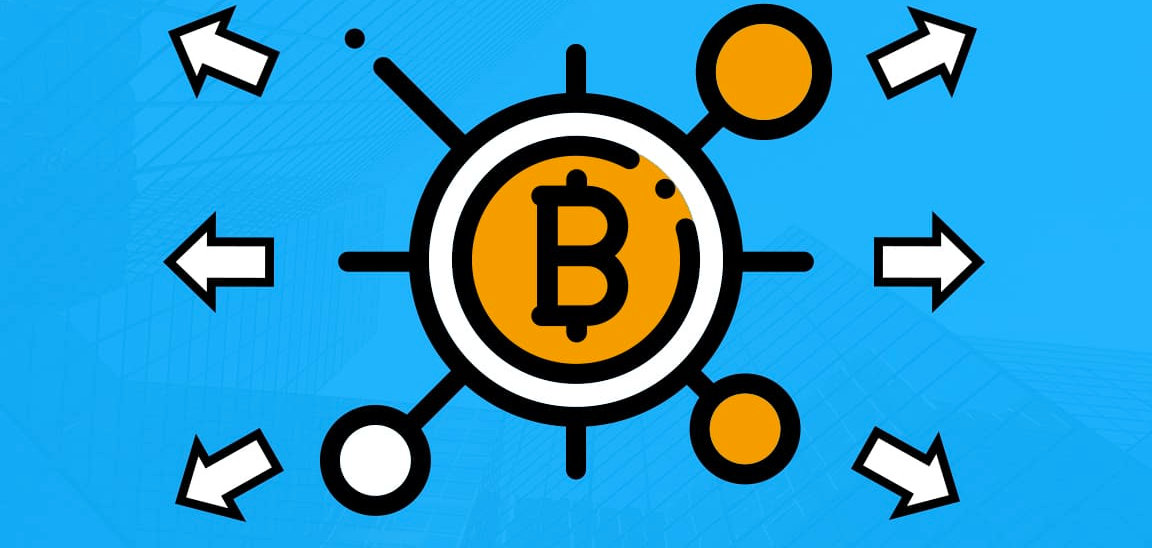Bitcoin Scalability Solutions - Addressing The Challenges Of Network Capacity
Explore Bitcoin scalability solutions: SegWit, Lightning Network, and more. Optimize network capacity efficiently.
Author:Camilo WoodReviewer:James PierceFeb 19, 20243.2K Shares96.8K Views

Bitcoin, the pioneering cryptocurrency, has garnered widespread adoption and interest since its inception. However, as its user base and transaction volume continue to grow, scalability has emerged as a pressing concern.
In response, developers and technologists have proposed various Bitcoin scalability solutionsaimed at improving the network's capacity and performance. In this article, we'll explore the Bitcoin scalability solutions in detail, their benefits, challenges, and their potential impact on the future of Bitcoin.
The Scalability Challenge
Bitcoin's original design, outlined in Satoshi Nakamoto's whitepaper, envisioned a decentralized peer-to-peer electronic cash system capable of processing fast and inexpensive transactions. However, as the network grew in popularity, it became evident that Bitcoin's scalability was limited by its block size and processing capacity.
Here are some Bitcoin scalability solutions:
Segregated Witness (SegWit)
SegWit is a protocol upgrade implemented in August 2017 that separates transaction signatures (witness data) from transaction data. By moving the witness data to a separate data structure, SegWit effectively increases the block's capacity, allowing for more transactions to be included in each block. This optimization results in a higher throughput and reduced transaction fees.
Lightning Network
The Lightning Network is a second-layer protocol built on top of the Bitcoin blockchain, designed to enable instant and scalable transactions through a network of payment channels. By conducting transactions off-chain and settling them periodically on the main blockchain, the Lightning Network alleviates congestion and enhances scalability while maintaining security and decentralization.
Increased Block Size
Proposals to increase the block size limit have been debated within the Bitcoin community as a potential scalability solution. Advocates argue that larger blocks would accommodate more transactions per block, thus increasing throughput. However, this approach is contentious due to concerns about centralization, as larger blocks would require more resources to validate and propagate, potentially leading to fewer nodes participating in the network.
Inscription Script
These blockchain data recording schemes, represented by Omni Layer, Ordinals, BRC-20, and Runes, involve appending descriptive information straight to the output scripts of Bitcoin transactions for the issue or transfer of assets.
OP_RETURN is the opcode that is usually used for this. Regular Bitcoin nodes ignore outputs with this opcode, but custom nodes that comprehend these token protocols can interpret them. These nodes manage asset issuance or transfers independently of the Bitcoin main chain and execute particular token protocol validation requirements.
This method, also referred to as "coloring" or "inscription of blockchain data", isn't always a well-thought-out technical innovation; rather, it's a product of the limitations placed on the Bitcoin UTXO transaction structure. It resembles a piecemeal solution.
Sidechains And Drivechains
Sidechains and drivechains are alternative blockchains that are interoperable with the Bitcoin network, allowing assets to be transferred between chains securely. By offloading certain transactions and smart contract functionality to sidechains, the main Bitcoin blockchain's capacity can be preserved, enhancing scalability while enabling experimentation with new features and use cases.
Better Consensus Mechanisms
A possible solution to increase the scalability of Bitcoin is to update the consensus algorithms on the network. At the moment, the Proof of Work (PoW) consensus, which is renowned for its robust security, powers the Bitcoin network. PoW is quite slow, though.
Proof of Stake (PoS), an alternative consensus method, has been suggested as a way to improve scalability without sacrificing decentralization or security. Compared to PoW, PoS enables faster transaction processing and lowers energy consumption by choosing validators based on their network stakes. In 2023, Ethereum made the switch from proof-of-work (PoW) to proof-of-stake (PoS).
However, since a lot of Bitcoin users consider PoW to be a fundamental aspect of the cryptocurrency, this move seems improbable and, if it happened, would merely result in a hard fork rather than a total overhaul of the network.
Sharding
Another possible remedy for the scalability issue with Bitcoin is sharding, which divides transactions into smaller datasets known as "shards." The simultaneous and parallel processing of these shards enables higher transaction performance. Sharding allows for the network to conserve processing time and storage capacity by dividing transactions into smaller chunks.
Nested Blockchains
Decentralized networks known as nested blockchains use the primary blockchain to set out guidelines for a more extensive network of linked secondary chains. Nested blockchains can increase scalability without compromising the security or decentralization of the main blockchain by permitting transactions to be carried out via these other chains.
Benefits Of Scalability Solutions
Increased Throughput: Scalability solutions increase the network's capacity to process transactions, reducing congestion and transaction fees.
- Improved User Experience -Faster and more reliable transaction processing enhances the user experience, making Bitcoin more accessible and practical for everyday use.
- Lower Transaction Fees - By reducing congestion and competition for block space, scalability solutions can lead to lower transaction fees, making Bitcoin transactions more affordable for users.
- Facilitation of Innovation - Scalability solutions enable experimentation with new features and use cases, fostering innovation and development within the Bitcoin ecosystem.
Challenges And Considerations
- Network Security - Maintaining security and decentralization while increasing throughput is a paramount concern. Scalability solutions must balance performance improvements with the need to preserve Bitcoin's core principles of censorship resistance and immutability.
- Protocol Compatibility - Compatibility with existing Bitcoin protocols and infrastructure is crucial for the adoption of scalability solutions. Ensuring seamless integration and backward compatibility is essential to avoid fragmentation within the ecosystem.
- Community Consensus -Achieving consensus within the Bitcoin community can be challenging, as stakeholders may have differing opinions on the best approach to scalability. Robust governance mechanisms and transparent decision-making processes are necessary to address divergent viewpoints and foster cooperation.
- Risk of Centralization -Some scalability solutions, such as increasing the block size, may introduce centralization risks by requiring more resources to participate in the network. Striking a balance between scalability and decentralization is essential to maintain Bitcoin's resilience and security.
Bitcoin Scalability Solutions - FAQs
What Is The Name Of Bitcoin Scalability Solution?
A scalability solution called Lightning Network aims to overcome the high transaction prices and sluggish transaction speeds of Bitcoin.
What Are Bitcoin Scalability Solutions?
Bitcoin scalability solutions are proposed protocols and optimizations aimed at increasing the network's capacity to process transactions efficiently and handle growing user demand.
How Do I Make Bitcoin Scalable?
SegWit raises the block size limit by deleting the signature data from the block, enabling more transactions to be included in each block. This facilitates a higher throughput of transactions on the blockchain and helps to resolve the scalability issue that Bitcoin has been having.
What Is The Main Challenge Of Bitcoin Scalability?
The main challenge of Bitcoin scalability is the limited throughput of the network, which is constrained by factors such as block size and processing capacity.
What Are Some Benefits Of Bitcoin Scalability Solutions?
Bitcoin scalability solutions offer benefits such as increased throughput, improved user experience, lower transaction fees, and facilitation of innovation within the ecosystem.
How Does The Lightning Network Improve Bitcoin Scalability?
The Lightning Network enables instant and scalable transactions by conducting them off-chain through a network of payment channels, reducing congestion on the main blockchain.
What Is One Possible Solution To The Scaling Problem For Bitcoin?
There are two approaches to scale bitcoin: either the blockchain can be improved to handle higher throughput, or new networks, or layers, can be built to facilitate the transfer of bitcoin outside of the blockchain.
What Role Do Sidechains And Drivechains Play In Bitcoin Scalability?
Sidechains and drivechains are alternative blockchains interoperable with the Bitcoin network, allowing assets to be transferred between chains securely and offloading certain transactions to increase scalability.
Conclusion
Bitcoin scalability solutions play a crucial role in addressing the network's capacity constraints and ensuring its continued growth and adoption. By implementing innovative protocols and optimizations, developers and technologists are working to enhance Bitcoin's scalability while preserving its core principles of security, decentralization, and censorship resistance.
As the cryptocurrency landscape evolves, scalability solutions will remain a focal point of discussion and development, shaping the future of Bitcoin and its role in the global economy.
Jump to

Camilo Wood
Author

James Pierce
Reviewer
Latest Articles
Popular Articles

